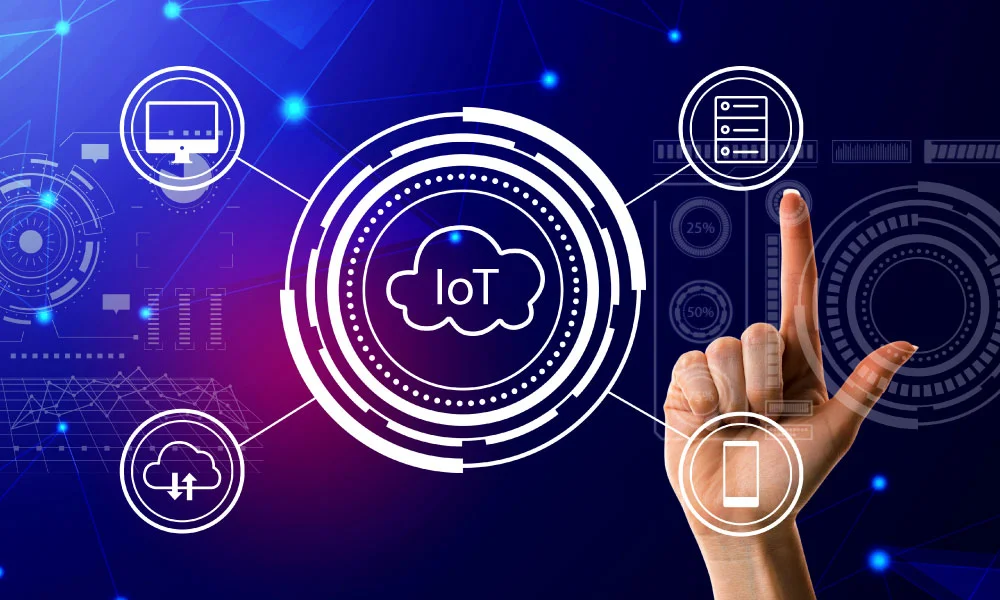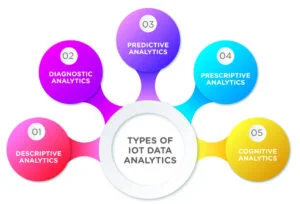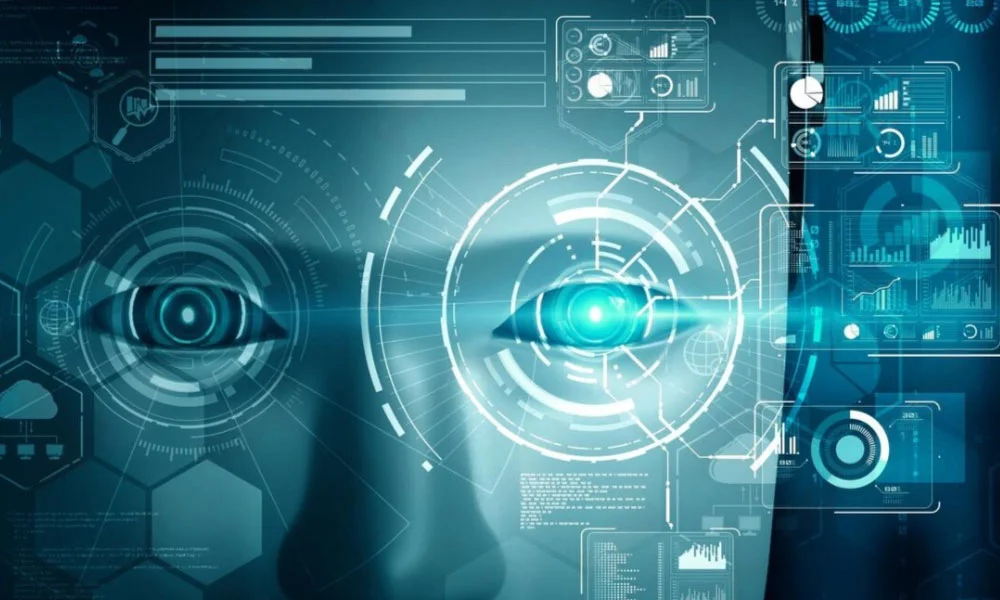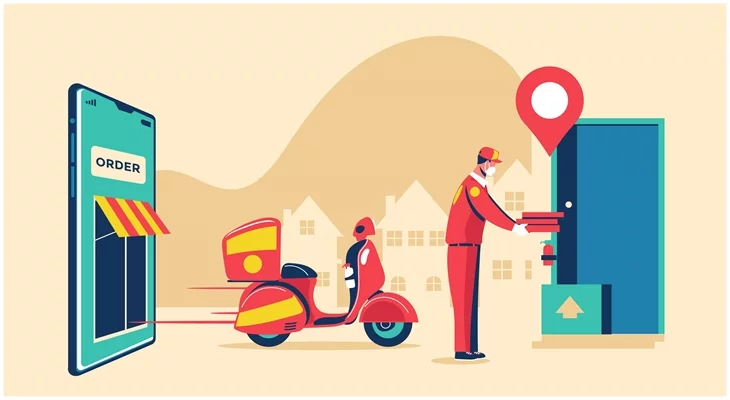The Internet of Things (IoT) is transforming the way we live and work smoothly, connecting our devices and environments. IoT is defined as the interconnected set of devices or things that sense, think, and interact, such as sensors, machines, and appliances connecting to the Internet and exchanging information. It may be smart thermostats controlling conditions in the living room of the house to sensor devices fitted into the production equipment of factories, all of which produce massive volumes of data. But it is of no use, as this data remains unanalyzed, and this is where IoT data analytics comes in.
What is IoT Data Analytics?
IoT Data Analytics describes the analysis done on the information gathered from those smart devices via the Internet of Things. Through sensors and devices such as a thermostat, or an air purifier, things like temperature changes and movement become recorded information, which is usually analyzed to search for patterns, trends, among other things about it.
The purpose of this information should be utilized in a way to create insights leading to better choices or improvements on how things work. For instance, a smart thermostat takes temperature data, and through IoT data analytics, it can figure out the best settings to save energy and keep your home comfortable.
Types of IoT Data Analytics
There are various types of IoT data analytics, each with its application. Some of the common types include:
Descriptive Analytics: Descriptive analytics is the easiest form of data analytics. It analyses historical data and understands what has happened in the past. For example, a smart thermostat may collect data on changes in temperature during the day. Descriptive analytics will help you understand trends such as when the temperature is at its highest or lowest.
Diagnostic Analytics: In descriptive analytics you get to know "what has happened," but in diagnostic analytics it gives the reason "why it happened." If a machine in your factory suddenly fails, then diagnostic analytics will help you to find out how and why such failure happened. It analyzes data from sensors or temperature, vibrations, and pressure.
Predictive Analytics: This analytics uses past data to assume future events. For example, if a smart refrigerator has failed in the past due to the changes in temperatures, predictive analytics will predict the moment when it is going to completely fail. Such analysis is helpful for future planning and prevention by businesses.
Prescriptive Analytics: Prescriptive analytics simply gives a prescriptive recommendation based on the analyzed data. If predictive analytics would notify about the possible breakdown of the machine soon, then prescriptive analytics will help to show the best thing to do-that is, repairing the machine or replacing it. It tries to provide a solution before the problem happens.
Cognitive Analytics: Cognitive analytics is the latest and more sophisticated version. It not only uses AI and machine learning for analyzing but also to learn and improve itself. After a long period, it may even be able to discern patterns and even make decisions by relying on experiences gained over time. This is highly required in dynamic environments, where decision-making has to happen in real-time.
Use Cases of IoT Data Analytics and Visualization
IoT data analytics is applied in numerous ways across various industries. Here are a few key use cases that show how this technology can be applied:
Smart Homes
Devices like lights, thermostats, and security cameras are interconnected through the internet in a smart home. In turn, it can adjust energy consumption and comfort using the data acquired from these devices. For instance, a smart thermostat learns the user's schedule for the day and adjusts the temperature accordingly, that is, while he is indoors or away to save energy and money.
As per a report published in September 2024, the number of IoT devices is growing by 13% to 18.8 billion globally.
Healthcare
IoT devices such as a wearable fitness tracker or a remote monitoring tool in healthcare collect vital data involving heart rate, blood pressure, and sleep patterns. These pieces of information enable one to trace the history of their health, predict future health complications, and even alert doctors in case of an emergency. Predictive analytics would prevent doctors from suffering from heart attacks or strokes since they can be foreseen beforehand.
Manufacturing
In the manufacturing industry, sensors placed on machines by IoT can identify overheating or excessive wear issues. Businesses can predict equipment failure, reduce downtime, and schedule maintenance at the right time with real-time analysis of this data. This saves money for companies because they avoid expensive repairs and have better productivity in general.
Agriculture
Soil sensors and weather stations give IoT devices that help farmers with vital data for agriculture. The reason analysis of data will make irrigation better, monitor the health of soil, and boost crop yield. For example, data analytics from IoT will indicate whether a farmer should water their crops; this information will enable them to provide the right amount of moisture with reduced use of water.
Supply Chain and Logistics
IoT data analytics has become a key enabler in supply chain management and improvement. The location, temperature, and condition of trucks or packages can be monitored using sensors installed on them. Analyzing this information ensures that the goods are delivered on time in the right condition. It allows companies to make demand forecasts and adjust their inventory accordingly.
Cross-Industry Insights
While IoT data analytics is found in many sectors, the understanding from this data often crosses over many sectors. The following are some cross-industry insights:
Efficiency Improvements
Whether it is smart homes, factories, or agriculture, IoT data analytics helps in optimization of business and individual operations. Businesses can reduce wastage, energy, and improve overall productivity, all through analysis of this data. For instance, in manufacturing and agriculture, predictive maintenance driven by IoT can provide cost savings and minimize the likelihood of unplanned downtime.
Predictive Maintenance
Predictive maintenance is one of the major advantages of IoT data analytics across healthcare, manufacturing, and logistics industries. The use of sensors allows businesses to predict when their equipment or systems need to be maintained to avoid breakdowns, which may contribute to longer lifespan of equipment and lower repair costs.
Personalization
IoT data can be used to personalize consumer experience. For instance, in a smart home, data from appliances can help customize energy use and security. Customer data from retail devices can be used to suggest related products or make the shopping experience more effective.
Real-time Monitoring
In many cases, the health of a patient or the condition of a shipment is to be tracked in real-time. IoT data analytics allows industries to monitor events in real-time and respond much more quickly to decision-making situations. This is very important in sectors such as healthcare and logistics, where time often stands still.
Integrating IoT Data for Better Decision-Making
IoT data is an excellent tool through which businesses can make better decisions, improve efficiency, and predict future events across all industries. Through connected devices, it becomes easier for the healthcare, agricultural, manufacturing, and logistics industries to solve problems more rapidly and deliver a better experience for customers. With this technology continuing to grow, insights will become increasingly valuable with the advent of IoT and data analytics.
Explore more about IoT at KnowledgeNile!
FAQs
1. What is IoT data analytics, and what are its challenges?
Answer. IoT data analytics transforms connected device data into actionable insights. The key issues include handling gigantic amounts of data, privacy, and security; as well as compatibility issues due to devices with different systems.
2. Why is data volume a problem in IoT?
Answer. Data volume is a problem in IoT because the large number of data created by countless connected devices can flood storage, processing, and analysis systems, thus making it challenging to get insights in time.
3. What is the biggest challenge in IoT?
Answer. The biggest hurdle in IoT has been security and privacy, especially because the higher the number of devices connected the more vulnerable to hacking and improper access systems can become.
4. What are the uses of IoT analytics?
Answer. IoT analytics has varied applications, among which are its uses in creating smart home automation, monitoring healthcare patients' status, optimizing manufacturing processes and supply chain operations.
5. How are the 4 layers of IoT?
Answer. There are four layers:
- Perception Layer– The physical appliances and sensors are used for getting data.
- Network Layer-The collected data has to be forwarded to the respective servers or even the cloud.
- Edge Layer- Processing has to be as close as to where it originates.
- Application Layer services or even tools are used when using data for a particular reason.
Also Read:
The Essential Guide to IoT Device Management and Its Importance






